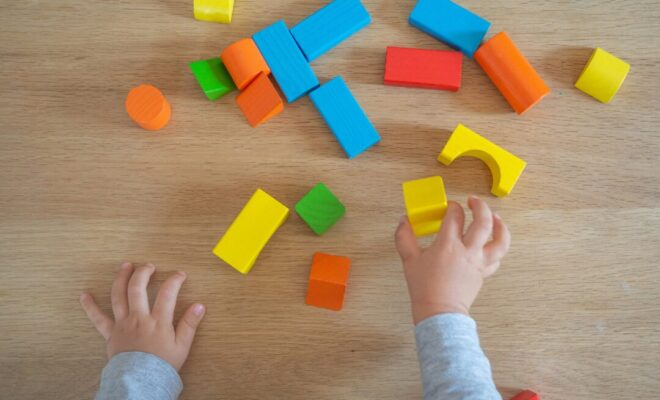Brighter Minds, Healthier Bodies: The Power of Toys in Child Development

In today’s increasingly digital world, it’s becoming more and more common for children to spend countless hours in front of screens—whether that be a television, tablet, or smartphone. While technology certainly has its place in learning and entertainment, too much screen time can negatively affect a child’s mental and physical development. Fortunately, there is a simple and effective remedy: traditional play with toys. From puzzles and dolls to climbing frames and sandpits, toys play a vital role in shaping brighter minds and healthier bodies.
The Science Behind Play
Play is not just about keeping children occupied. According to child development experts, play is essential to cognitive, emotional, and physical growth. Engaging in play helps children explore the world around them, develop problem-solving skills, and build emotional resilience. Moreover, it encourages creativity, language development, and social interaction—skills that are vital for lifelong success.
Toys, whether indoor (Jeux d’intérieur) or outdoor (Jeux d’extérieur), act as tools through which this developmental play occurs. They serve as the foundation for activities that stimulate brain function and physical activity, offering a multi-sensory experience that digital devices often fail to replicate.
Mental Development Through Toys
Certain toys are particularly effective in nurturing cognitive skills. Building blocks, puzzles, and educational games challenge young minds to think critically, plan ahead, and make decisions. These are the kinds of toys that inspire curiosity and encourage children to ask questions and seek answers.
Role-play toys such as kitchen sets, medical kits, or dress-up clothes help foster imagination and empathy. Through pretend play, children learn to understand different perspectives and practice social roles. Jeux d’intérieur, such as board games or construction sets, offer structured yet flexible environments where children can safely experiment and learn from their mistakes.
Additionally, interactive toys that respond to a child’s actions can reinforce cause-and-effect thinking. These cognitive exercises are crucial in preparing children for formal education and real-world scenarios.
Physical Health and Active Play
In an era where sedentary lifestyles are contributing to childhood obesity and other health issues, encouraging physical play is more important than ever. Jeux d’extérieur such as climbing frames, trampolines, and scooters help children stay active, build motor skills, and improve balance and coordination.
Physical play not only keeps children fit but also strengthens their cardiovascular health, boosts their immune systems, and enhances their overall wellbeing. More than just physical benefits, active play helps to release energy in a positive way, which can improve concentration and behaviour when it’s time to settle down for quieter activities or schoolwork.
Emotional and Social Benefits
Toys also play a crucial role in emotional development. Soft toys and dolls can be comforting companions, helping children navigate feelings of anxiety or loneliness. Interactive games and cooperative toys encourage sharing, turn-taking, and empathy.
Group play, whether in a school setting or at home with siblings and friends, helps children develop important social skills. Negotiating rules, resolving conflicts, and celebrating victories together all contribute to a child’s emotional intelligence. Jeux d’intérieur like board games and puzzles are particularly effective for this kind of development, as they require communication and cooperation.
Balancing Screen Time and Toy Time
While digital devices can be educational and entertaining, moderation is key. Experts recommend that screen time for young children be limited and always supervised. Replacing passive screen time with active toy play is one of the most beneficial decisions parents can make.
Creating a balanced routine that includes both structured and unstructured play ensures that children get the best of both worlds. For instance, a child might enjoy a short educational video followed by a hands-on activity inspired by what they watched. This helps to reinforce learning while encouraging creativity and physical engagement.
Choosing the Right Toys
Not all toys are created equal. When selecting toys for your child, it’s important to choose ones that are age-appropriate, safe, and engaging. Look for toys that stimulate multiple senses, such as those that involve touch, sound, and movement.
For indoor play, consider Jeux d’intérieur like building blocks, train sets, or interactive storybooks. These provide opportunities for calm, focused play that nurtures attention span and cognitive skills. For outdoor play, Jeux d’extérieur such as swings, climbing frames, or sand and water tables offer endless opportunities for physical exploration and social interaction.
Try to include a variety of toys that cover different developmental needs. A well-rounded toy box should have something for imaginative play, physical activity, problem-solving, and social interaction. Rotating toys every few weeks can also keep things fresh and engaging.
Parental Involvement
Perhaps the most powerful tool in a child’s development is parental engagement. Playing with your child not only strengthens your bond but also models positive behaviours. Parents can guide play, introduce new ideas, and help children make sense of their experiences.
Encouraging siblings to play together or setting up playdates with friends can also enhance the social value of toys. And don’t underestimate the power of free play—unstructured time where children lead the way fosters independence and confidence.
Conclusion
In a time when screens are ever-present, the humble toy remains a cornerstone of childhood development. From Jeux d’intérieur that enhance focus and creativity to Jeux d’extérieur that build strength and social skills, toys are essential tools for growing brighter minds and healthier bodies.
By intentionally encouraging toy-based play and maintaining a healthy balance with digital media, parents can ensure their children grow up to be curious, confident, and well-rounded individuals. It’s not just about keeping children busy—it’s about giving them the tools to thrive.

